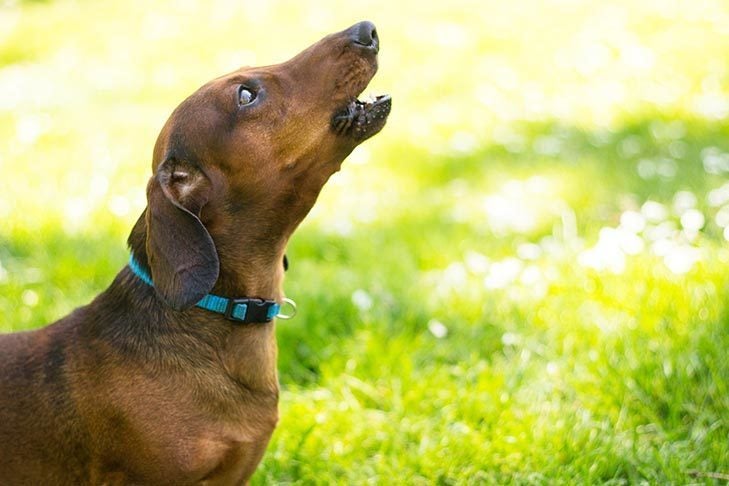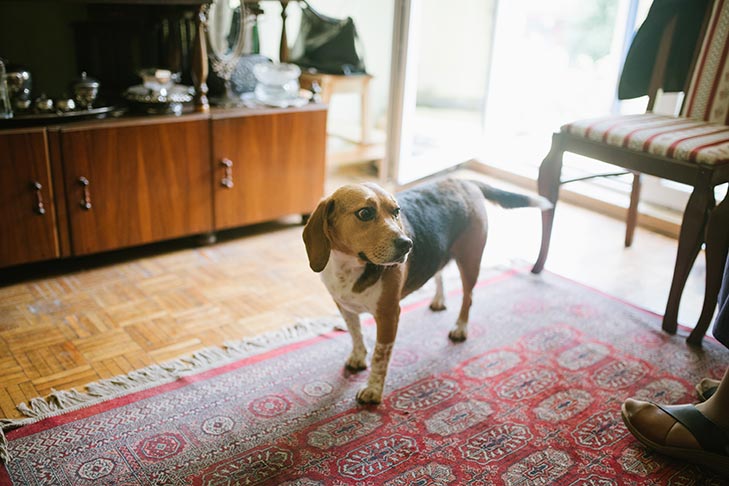Common signs of anxiety in dogs include:
Clubs Offering:
|
So often, we hear that a dog just bit someone “out of nowhere.” The truth is, dogs rarely bite with no warning.
Dogs primarily communicate using body language, so it’s important for humans to understand what they are trying to tell us. Learning our dogs’ special ways of communication can reduce their anxiety and prevent potentially dangerous situations from happening. There are several warning signs to look for to help tell if your dog is stressed.
Growling is an obvious way to tell if your dog is uncomfortable. It could mean that someone is in their space, they feel threatened, or that something hurts. It’s not usually meant to be aggressive but it is rather often a warning that your dog feels uncomfortable.
Many people try to discourage their dog from growling. But if a dog gets in trouble for it, they may become more likely to skip future warnings and go straight to a bite. Don’t punish your pup for growling. Instead, respect their space or figure out a different way to get what you want from them. For example, if a dog is growling over food, give them space when they eat in peace. If they are growling over a bone and you need to put the bone away, trade them for a smaller treat so you can take the bone away safely.
Many dogs cannot control their whining when they feel stressed, as it’s more of an automatic response. However, it is a clue for humans that something in the environment is causing anxiety. Barking is similar, in that pups can’t always control it, but they’re trying to tell you that they’re stressed about something. It may, however, depend on the context, as dogs may whine and bark for many other reasons.

There are entire books written on dog body language and “calming signals,” a term developed by Norwegian dog trainer Turid Rugaas. Rugaas realized that dogs have more than 30 ways to avoid stressful situations and try to calm themselves. When pups exhibit these behaviors, they’re trying to diffuse the situation or tell you or another dog that they aren’t a threat.
Stress signs to look for include whale eye (when dogs reveal the whites of their eyes), tucked ears, tucked tail, raised hackles, lip-licking, yawning, and panting. Your dog might also avoid eye contact or look away. This is most commonly seen in a dog that seems “guilty.” However, the pup is actually reacting to your voice and body language and thinks something must be wrong.
Don’t rely solely on body language. Also, some dogs raise their hackles when they are overstimulated or excited, not necessarily when they are stressed or anxious.
When your dog freezes or gets stiff, they are often stressed about something they see. In a training context, this can sometimes be seen as “submission,” but modern dog training practices tell us that the dog is actually shutting down. This can be very dangerous for both you and your pup. It’s a warning sign that the dog is so stressed that they can’t handle the situation, and the next step may be a bite.
When canines are pacing back and forth, it’s a sign they can’t settle down because something is stressing them. If this happens during mealtimes or for short periods, it might not be a big deal. But, noticing when your dog engages in this behavior can give you clues as to what is triggering their anxiety.
In older dogs, pacing may be a sign of dementia. If you start to notice this in your senior pet, talk to your veterinarian right away.

Note: With all of these signs, it all still depends on the individual dog and the context of the situation. For example, some dogs growl or “talk” while playing. It could mean they are getting overexcited and need a break, but it could also just be the way they play. Getting to know when your dog is stressed is key. You should always talk to a professional dog trainer if you have any concerns. Or, consider a trip to your veterinarian if your dog’s behavior changes suddenly.
10 Signs Of Anxiety In Dogs
Youll see 10 signs listed in this article, but please keep in mind that the dog doesnt have to display all of these, nor does the appearance of some of these indicate actual anxiety. Dogs can encounter situations that elicit valid responses of fear, anxiety, and so on. These are just the more common signs that can clue you into something that needs to be checked out. Also, pet parents should be aware that sometimes behavior that seems fearful or worried is the dogs way of reacting to other health issues that require a diagnosis from a veterinary professional.
Some dogs are naturally vigilant and always on the lookout, but theyre still generally calm. If your calm, friendly dog seems to be on alert much more, is more agitated, and/or reacts badly to people they usually wouldnt react badly to, pay attention.
Assuming the dog isnt suffering from a physical medical condition with symptoms that mimic this behavior, start looking at when and where the dog acts up. If its to a specific stressor, remove it. Does the dog act up when around huge groups of dogs in the dog park? Find a different dog park or try going at times when its not as crowded. Also create a quiet space for the dog in your home, where it can go to hide out and breathe.
This is a straightforward loss of body control when dealing with excitement or anxiety. Once in a while, in response to a very exciting or understandably scary incident, is just a reaction to that incident. But if this keeps happening, especially if the dog was previously house-trained, it requires treatment. Start the process of house-training your dog again as if they were a new puppy. When you leave your home or do something where you cant supervise the dog, limit the dogs access to the areas in the house that they seemed to use the most, as they can become used to those areas being “OK” even if you dont think they are. Keep the dog crated or placed in their usual sleeping area, as they will be less likely to use that area as a second bathroom.
Some dogs are just drooly, but if yours normally isnt, it could be a potential sign of anxiety. You must be sure nothing else is causing it, however, such as a dental problem. If everything else checks out, look at dog-soothing methods such as placing them in the harness they use in the car, if the anxiety seems related to driving. As drooling is often related to nausea, you may want to ask your vet about anti-nausea medication.
If your dog has been resting and is not in a hot environment, they shouldnt be panting. Normal panting occurs during and after exercise and when its very hot. Anything else could indicate a problem. In this case, its possible the anxiety behind the panting could be related to pain, and youll need to discuss this with your vet.
This symptom is exactly what it sounds like: your dog becomes destructive. It can be moderate, such as chewing up a pillow when the dog is still new and nervous about being in your home, but it can also become very disruptive, including destroying door frames and furniture. If you can figure out why your dog is anxious, address that first. A new dog who came from a rescue could be very nervous, so creating safe, calming spaces and providing engaging activities might help. A dog thats started chewing after a major change in diet could be suffering from calorie intakes that are too low. Or, the dog might not have good outlets for its normal energy, in which case giving it more chew toys and increasing the number of opportunities it has to run and play may be the best option.

Maybe your dogs energy level has gotten so low that destructive chewing would actually be a good sign. Fear and anxiety stemming from the loss of a companion or going through a major change can lead to depression in dogs. In most cases, the depression is temporary; in these cases, try to be with the dog and comfort it. If you introduce a new companion, do it carefully to ensure the two get along. In cases where nothing seems to work, medication might be the best route.
The barking caused by anxiety is usually the dogs attempt to get your attention or find you. Whether the anxiety is due to separation anxiety or another cause, the dog wants you there with it right now. While you address the core cause of its anxiety, also train it to be quiet using treats.
Being restless and pacing about is a very common symptom of dog anxiety. Its not unusual to see this when there are lots of loud fireworks going off, for example. Give the dog a safe space, and if the anxiety is due to loud noises, a thunder shirt or dog videos might help. For chronic issues, medication or supplements may be in order.
Compulsive biting and gnawing, especially at its own body, compulsive chasing, spinning, and other repetitive behaviors are another sign the dog is anxious. You need to interrupt the behavior. Discuss ways to do this with your vet, such as playing, giving the dog food-puzzle toys, or training the dog to respond to commands such as “sit.”
If you’ve noticed your dog’s sleeping patterns are off, it could be a sign that they’re dealing with anxiety. However, anxiety can both cause changes in sleep and be a result of lack of sleep.
Dog anxiety treatment generally falls into three categories. One is environmental management; by removing items that create anxiety, providing a safe space to retreat to, and ensuring the dog doesnt have to go to places it doesnt like, a lot of anxiety can be reduced or soothed. Behavioral modification is another branch of treatment; interrupting compulsive behaviors and re-training the dog to eliminate outside are two examples. Dog anxiety medication also helps in many cases. These can range from supplements that help calm the dog to medications that affect brain chemistry.
Top Ten Signs Your Dog Has Anxiety Issues
Recognising fear or anxiety in your dog can help you resolve or avoid situations they find difficult.
If you can recognise the first signs of fear or anxiety in dogs, then youâll be able to help your dog avoid the things that worry them and keep clear of potential conflicts.
This will help prevent your dog from developing more established fears and keep everyone in the family, including your dog, feeling safe.